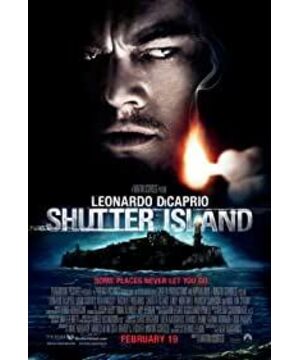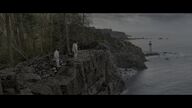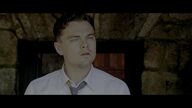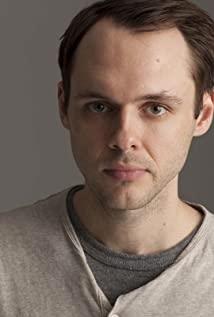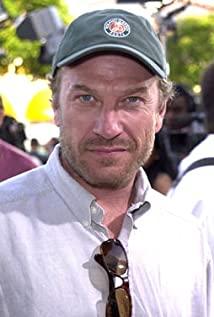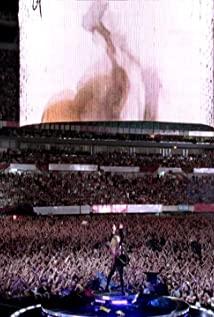audio video link
Hello everyone, welcome to listen to this episode of the old movie review, I am half a cat
What I want to share with you today is the 2010 movie "Shutter Island"
This is a suspenseful masterpiece directed by Martin Scorsese, starring Leonardo DiCaprio. I have to admit that I like watching Leonardo's helpless expression throughout. In my eyes, this movie is probably the pinnacle of Leonardo's performance.
There have always been two distinct views on the interpretation of "Shutter Island". One side believes that the people on the island are performing a role-playing game in order to cure Teddy's mental illness, an interpretation we call "therapeutics". The other side believes that a conspiracy is brewing on the island, the purpose is to brainwash the living and conduct human experiments. We call this interpretation a "conspiracy theory".
To be honest, in fact, I have never believed that there is a "conspiracy theory". The first is lack of motivation. Why must he go to great lengths to turn a powerful and background federal law enforcement officer into a lunatic and forcibly perform human experiments on him? There are so many lunatics in the world who do not catch non-normal people, what is the motive for adopting such a risky way? The second is the poor acting skills. If the people on the island are really professional conspirators, at least they must act well, not to mention the seamlessness, at least they shouldn’t be as careless and full of loopholes as in the play. Make a flaw and let the protagonist discover the truth by himself. There are a lot of flaws that can be cited, such as the men’s leather shoes in Rachel’s room, such as asking the nurse in the male ward if they saw Rachel fleeing, such as listlessness on the beach, absent-minded search team, etc. I believe that you can find a lot of evidence supporting "therapeutic theory" on the Internet. I will not list them one by one. It is the most fun to discover this process by ourselves.
What I want to add here is the information that is vague in the movie, or that needs to be assembled to see the whole information.
First of all, I think it is necessary to complete the background of the protagonist, and then we can see the whole picture of a complete story:
Teddy's real name is Andrew Redis, a US soldier who participated in World War II. During the war, he witnessed too many violent acts of cannibalism, and he became an executioner with blood on his hands, which made him suffer. Severe postwar syndrome.
Redis is the father of three children. At the end of World War II, due to post-war trauma, Redis used alcohol all day long to shield painful memories, neglected and ignored his wife who suffered from severe depression, and his wife set fire to the city in order to attract his attention. apartment, the family moved to a lakeside cottage.
After moving, Redis still had a glass of whiskey the first thing he did when he got home, a bad habit that was hard to break. Returning home one day, Redis found his wife drowning their three children in a lake. When it was too late, distraught, he shot and killed his wife, and became insane himself, a psychopath with schizophrenia and extreme delusions.
The court took Redis, who was mentally ill and could not be sentenced to death, so he was imprisoned in a mental hospital on the confinement island. Redis is being held in Block C, the intensive care unit, on the Shutter Island. Because of his history of violence and professional training, he is a complete danger, and the island's patients and security have turned him away. Redis made up a complete story in his mind. He imagined for himself a federal law enforcement officer named Teddy. On the grounds that a female patient named Rachel fled on the island, he went to the island to investigate, and then went to the island to investigate. He imagined a character whose arson caused his wife's death and took his name Redis as a branch line, and also conceived a whole set of conspiracy theories about the Shutter Island, believing that the island was secretly conducting human experiments on mental patients. In the past two years, Redis has repeatedly fallen into this conspiracy story that he imagined. Every time the truth is revealed, Redis will still fall into the fantasy again, unable to extricate himself.
This is the life experience of the protagonist Leonardo before the movie begins.
Then what we need to understand is the controversy about the treatment of mental illness in the movie, which is the rationale for designing a game for Teddy.
Near the end of the film, Dean Cowley said solemnly to Teddy, we are now fighting a battle, and it is up to you to win. What kind of battle is the dean mentioned here is actually a confrontation between two different psychiatric treatments.
The 1950s, the era of the film, was the period of the most intense collision between the two different psychiatric treatments, the "biological model" and the "psychoanalytic model."
The traditional method is surgical treatment, that is, psychiatric surgery, similar to orbitofrontal lobotomy, in which some nerves are removed through the eyes. As for the curative effect, some people say that the patient has become docile and sensible, while others say that they have become the walking dead
And then there's psychiatric pharmacology, a new drug called chlorpromazine, which just got approval, can relax, or tame, patients.
Both of the above can be classified as "biological patterns"
And Dean Cowley in the movie, he is a fan of the "psychoanalytic model". He believes that as long as you respect patients enough, listen to and understand them, you can enter their hearts, help them realize what they are doing, and get out of the predicament of their own thoughts.
That's why the Dean had to go to great lengths to arrange the whole island's staff to play detective games with Teddy, because the Dean firmly believed that it was possible for patients to rediscover themselves by their own will, as long as they were given such opportunity. And once it is successful, it will not be as repeated as the method of using drugs. He cited the case of Rachel to illustrate the unreliability of drugs. In fact, it should be Teddy.
And Teddy's assistant Chuck, who is Teddy's attending physician Sheehan, is also a "psychoanalyst". The dean and Dr. Sheehan played role-playing games with Leonardo while thinking of ways to Remind Redis about his origins, the unreality of the world he lives in. For example, when introducing the fictional character Rachel, the dean used Rachel's story to imply that Teddy drowned the child, and he was in a mental hospital for two years without knowing it. He firmly believed that the people around him were postmen, milk workers, and deliverymen. . These coincide with the real situation of Redis.
The medical staff are basically performing very hard. The best acting is the nurse "Rachel". As a nurse in a mental hospital, her acting skills can be described as relaxed and explosive, which is not easy.
The security personnel in charge of the safety of the mental hospital, although they do not understand the "biological model" and "psychoanalytic model", just try their best to cooperate with other people's performances. The acting is also relatively poor.
The most amazing thing about this movie is that after watching it, we are very clear that this is a game designed for the protagonist, but isn't the movie itself another game for the audience?
Shutter Island is a movie you have to watch at least twice. It's not that you can't understand it again. From the first time to the end, you will definitely find the thrill of realizing it. But it's not the coolest. You have to watch it at least again, because the mystery of the story is actually written in the expressions and actions of the characters. And it's not fake and artificial, it's a completely clever editing technique. I believe that most people feel quite natural when they watch it the first time, but it naturally becomes unnatural by the second time. You can play a well-designed "Find the Difference" while watching the movie.
One of the more daunting parts of movies is distinguishing which shots are real and which ones are fictional.
When I watched it for the first time, I only thought that Leonardo's dream about his wife was fictional and everything else was real.
But the second time I watched it, I came to a completely different conclusion. Except for the fact that it was real in the early stage, after the protagonist started to have a headache in the later stage, most of them were fictitious.
We all know that the protagonist is afraid of water because his three children are drowning in water, he has witnessed this with his own eyes, and therefore has a deep fear of water in his subconscious. So at sea, he had already started to vomit and have diarrhea, which was very uncomfortable.
The island was cloudy at first, then it started to rain, and then it turned into a storm, which I think is the manifestation of the worsening mental state of the protagonist. The more the protagonist has a headache, the worse the weather. By the time the protagonist finally wakes up, the sky is clear.
Because the so-called storms are all Leonardo's hallucinations. I know this may affect your viewing experience, but it's a fact, Dean Cowley said on the lighthouse that the storm is the hero's fantasy. In addition, when the protagonist sneaks into the C area, we see that the storm has made a mess of the confinement island, and there are downed trees everywhere. However, when the protagonist finally woke up, the trees outside were still lush and intact. This apparent contradiction in reality is the real hammer that proves that the storm is the hallucination of the protagonist.
After the storm, the protagonist climbs down the cliff, jumps into the water and swims to the lighthouse. The large sections of the picture here may be the hallucination of the protagonist. Chuck's body lying on the beach is an illusion, a large number of mice appearing on the cliff is an illusion, Rachel in the cave is an illusion, afraid of the water but jumping into the water without hesitation is an illusion, and hitting the dean with a gun is an illusion.
There is also the nesting of dreams within dreams, that is, waking up from one dream and discovering that you have entered another dream, the same as "Inception", so it is really difficult to judge which is reality and which is illusory.
The last thing I want to say is the state of the protagonist before the curtain call, whether he has really recovered his sobriety.
When the dean cross-examined Redis in the ward, he was clear about his background and confessed. But in a blink of an eye, when he was smoking outside the door and the attending physician, he became a different person, and continued to play the role of a law enforcement officer.
Should you live like a beast or die like a hero?
This line cast another veil on the ending that I thought had suddenly come to light.
Without this sentence, the movie is just a suspenseful movie with a major reversal in the plot, but with this sentence, we seem to be able to perceive that the director wants to express more things to us.
Redis looked calm as he finally walked up to the nurse, even nodding to the dean, a well-thought-out decision. Redis once said in the cave to Rachel who imagined that "the memory of a person cannot be completely erased". He always suffers from being unable to get out of the painful memories. After sobering up, he discovered that there may be only one way in the world. Although cruel, it is also worthwhile.
He woke up, but deliberately pretended not to wake up. In his own fantasy story, Leonardo is always the law enforcement officer who exposed the conspiracy on the island. Even if it is a brutal brain removal operation that awaits him, he is willing to maintain the hallucination of a hero until the memory stops. In the real world, he was a murderer who was plagued by post-war trauma and was bound by remorse for killing his wife and son.
In fact, all the patients on the island are not like this. There was a mental patient who was shirtless and fleeing in the C area, but he did not want to leave here, just as he did not want to leave the beautiful world imagined in his mind. The patients who are not shackled but take care of the lawn in an orderly manner have no urge to rise up. The Shutter Island may seem to ordinary people to be a terrifying prison, but it is indeed a quiet harbor where the wounded souls can anchor.
In the past, don't be obsessed, and in the future, don't force it.
We have lived, loved, and laughed, as long as anyone can remember.
audio video link
View more about Shutter Island reviews


